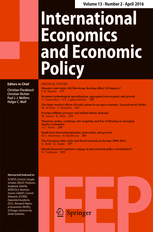
On the Twin Deficits Hypothesis and the Import Propensity in Transition Countries
This article uses co-integration and related techniques to test for a long-run causal relationship between the fiscal and external deficits of three post-transition countries in Central and Eastern Europe. In addition, an import propensity model is tested by applying OLS and GMM. All the results reject the Twin Deficits Hypothesis. Instead, the results demonstrate that specific transition factors such as a high import intensity of exports and net capital inflows affect the trade balance.





